Mounjaro is a popular weight loss drug that is administered as a weekly injection. It is popular for a good reason. Studies have shown that you can lose up to 22.5% of your body weight when taking Mounjaro 15mg over 72 weeks.
Mounjaro utilises hormone peptides to send signals to the brain, reducing the hunger signals and increasing satiety between meals. These effects are significant, but they also require a balanced diet and a healthy lifestyle to achieve the best results.
If you don’t know what to eat, what to avoid and what to have in moderation, then this is the guide for you. We will provide you with everything you need to know to maximise the benefits of your treatments while minimising potential side effects..
Table of contents
- Why do I need to diet if I’m taking Mounjaro?
- How does Mounjaro work?
- What should I eat on Mounjaro?
- If I experience side effects, what fruits and vegetables should I avoid?
- Healthy fats
- Saturated Fats
- Trans fats, the evil fats
- Sugar
- What should I eat when taking Mounjaro?
- What should I drink on Mounjaro?
- What foods should I avoid on Mounjaro?
- What should I avoid drinking?
- Caffeine
- Recommended diet plan
- Lifestyle advice to aid your weight loss journey
- FAQS
- How do I order Mounjaro from Courier Pharmacy?
- Why choose Courier Pharmacy for Mounjaro?
- References
-
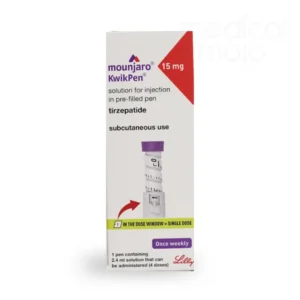 Mounjaro 15mg InjectionPrice range: £422.50 through £1,640.00
Mounjaro 15mg InjectionPrice range: £422.50 through £1,640.00 -
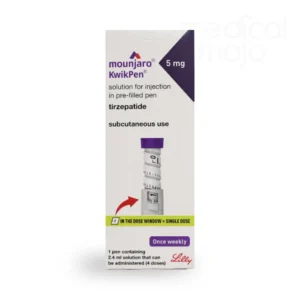 Mounjaro 5mg InjectionPrice range: £229.99 through £899.99
Mounjaro 5mg InjectionPrice range: £229.99 through £899.99 -
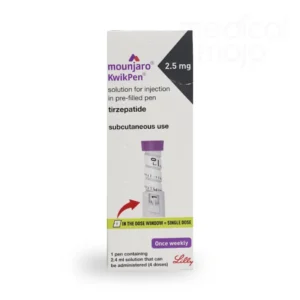 Mounjaro 2.5mg InjectionPrice range: £174.99 through £649.99
Mounjaro 2.5mg InjectionPrice range: £174.99 through £649.99
Why do I need to diet if I’m taking Mounjaro?
Numerous clinical studies have been conducted on Mounjaro, and there is overwhelming evidence to support its effectiveness in weight loss.
One study, in particular, the SURMOUNT-1 trial, demonstrated that up to 96% of participants lost at least 5% of their starting weight over 72 weeks [1]. In addition, the trial found that people could lose up to 22.5% of their bodyweight when using tirzepatide or Mounjaro 15mg [2]. Alongside the treatment, all participants followed a reduced-calorie diet and an exercise regimen.
One study, in particular, the SURMOUNT-1 trial, demonstrated that up to 96% of participants lost at least 5% of their starting weight over 72 weeks [1]. In addition, the trial found that people could lose up to 22.5% of their bodyweight when using tirzepatide or Mounjaro 15mg [2]. Alongside the treatment, all participants followed a reduced-calorie diet and an exercise regimen.
One study, in particular, the SURMOUNT-1 trial, demonstrated that up to 96% of participants lost at least 5% of their starting weight over 72 weeks [1]. In addition, the trial found that people could lose up to 22.5% of their bodyweight when using tirzepatide or Mounjaro 15mg [2]. Alongside the treatment, all participants followed a reduced-calorie diet and an exercise regimen.
How does Mounjaro work?
With Mounjaro, you get two for one. This is because Mounjaro targets both GLP-1 and GIP. This dual action of Mounjaro helps you lose weight in three main ways:
- It helps reduce hunger by suppressing your appetite.
- It helps you feel fuller for longer.
- It slows down how quickly your stomach empties.
The benefits of GLP-1 and GIP are listed below:

The 500-calorie deficit
Your diet is vital while on treatment because, although Mounjaro can reduce your hunger, it does not, on its own, lead to weight loss. It is recommended to consume 500 calories below your maintenance level to lose weight safely [3].
Your calorie maintenance refers to the amount of calories you need each day to maintain your weight [4]. The calories you can consume to maintain your weight are determined by several factors, including your gender, age, activity level, and weight [4].
To lose weight, you need to burn more calories than you consume; however, you still need to eat a balanced diet to ensure your body has the necessary nutrients to lose weight healthily. If you are lacking in any vitamins or nutrients, this can cause deficiencies in your body, which can affect not only your weight loss journey but also your overall health.
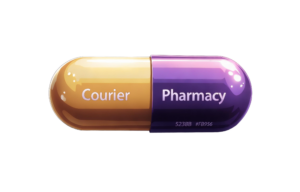
Your diet and Mounjaro side effects
All medications have the potential to cause side effects; Mounjaro is no exception. As Mounjaro affects your stomach and gut, it is no surprise that many of the common side effects are gastrointestinal.
Common side effects include acid reflux, diarrhoea, nausea, stomach pain and vomiting [5].
Your diet can influence whether you are at risk of these conditions and, if so, the severity of the side effects.
What should I eat on Mounjaro?
We aren’t here to give you a strict meal plan that you have to follow. Instead, we would rather provide you with general guidelines to help you maintain a balanced diet, ensuring you meet all your body’s nutritional needs.
This is to ensure that while you lose weight, your body will not experience any nutritional deficiencies, allowing you to maintain energy and stay healthy throughout the process.

Protein
Protein is an essential macronutrient, which is made up of amino acids. They are responsible for repairing tissues in the body, such as muscles, skin, and cells, creating antibodies to ensure the immune system is functioning correctly, regulating hormones, and much more.
Not all protein sources are created equal, so we suggest choosing sources that are low in fat and that contain fewer calories. Examples of these include, but are not limited to, chicken breast, fish, poultry, and low-fat cuts of beef.

Carbohydrates
Carbohydrates are a macronutrient that is responsible for providing energy to the body. They come in two forms: simple and complex.
Simple carbohydrates
Simple carbohydrates are sugars that are quickly absorbed by the body and used for energy. A good example of this is fruits.
Complex carbohydrates
The other form is complex carbohydrates, which are composed of longer chains of sugar molecules, such as starches and fibre. These take longer to digest and are released at a much slower pace. Examples of these include rice, oats, pasta, lentils, etc.

Fruits and vegetables
Eating fruit is a great way to snack between meals or as part of a balanced breakfast. Most, if not all, fruits are high in fibre and water, which will leave you full between meals and ensure that you are well hydrated.

For weight loss purposes, some fruits are better than others. We recommend the following:
Berries
They are low in calories but rich in vitamins and are beneficial for managing cholesterol, inflammation, and blood pressure.
Apples
Apples are also very low in calories but high in fibre, meaning they will keep you full for longer.
Additionally, they are rich in polyphenols, which help prevent the accumulation of visceral fat [6].
So, there could be some justification for the saying, ‘An apple a day keeps the doctor away’.
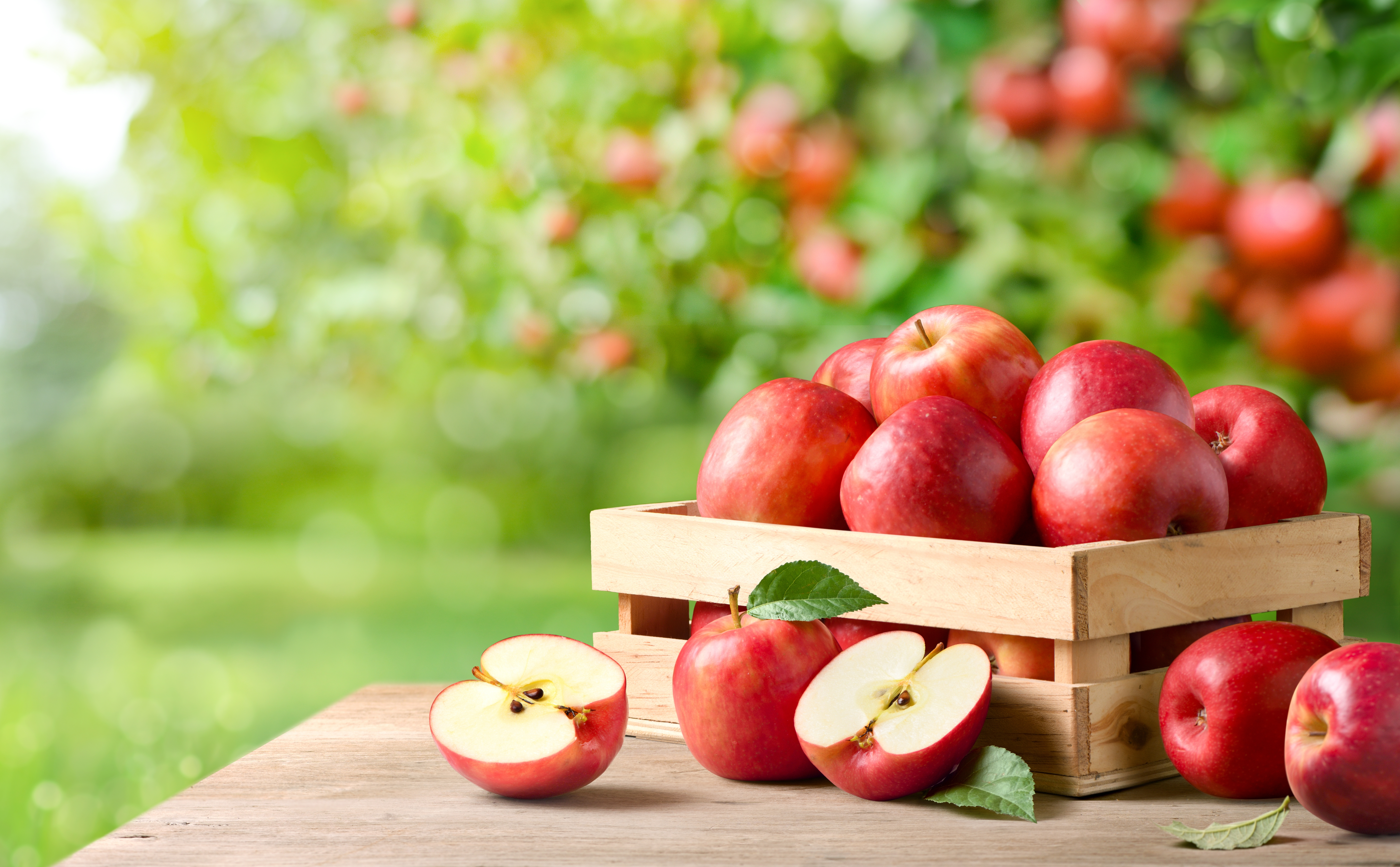
Grapefruit
Again, this fruit is low in calories, rich in vitamins, but also full of antioxidants. However, care should be taken, as grapefruit can interact with other medications. This is because grapefruit blocks an enzyme in your body that usually helps break down the medicine. This means that more of the medicine stays in your system, which can increase the likelihood of side effects.
For example, grapefruit juice can interfere with how the body breaks down certain statins, such as simvastatin and atorvastatin, leading to higher blood levels and an increased risk of side effects, including muscle pain or liver problems [7].

Fruit juices
Fruits should be a staple of your diet if you want to lose weight. However, be wary of fruit juices. These contain a lot of sugar and lack fibre due to the processing.
It would be better for you to make your smoothies from scratch rather than buy them store-bought, or even better, eat the fruit itself.
This is because fruits are perfectly designed to allow for a more controlled sugar spike since they also contain fibre. In contrast, fruit juices have the fibre removed, so you get an immediate sugar kick and insulin spike, which in the long run can lead to weight gain and type II diabetes.

Vegetables
Vegetables contain very few calories and carbohydrates; however, they are rich in fibre, vitamins, minerals, and antioxidants. And because they are not calorie-dense, you can eat a lot of them and you will feel full for longer. Additionally, the fibre content helps keep you feeling full and aids digestion.

If I experience side effects, what fruits and vegetables should I avoid?
Mounjaro works by slowing down digestion, and as a result, digestion-related side effects such as diarrhoea, constipation, and bloating are quite common.
If you are experiencing these symptoms, it would be a good idea to opt for low-fibre fruits and vegetables for the time being and then, over time, increase your fibre intake as needed.
Please note that if your previous diet didn’t contain a lot of fibre, your body will need time to get accustomed to it.
We have prepared a list to give you an idea of the amount of fibre in different fruits. However, first, we will explain what AOAC stands for.

What is AOAC?
AOAC stands for the Association of Official Analytical Collaboration Chemists. When you see “AOAC fibre” on food labels or in nutrition tables, it refers to the amount of dietary fibre measured using the official methods approved by this organisation.
The AOAC methods are considered the gold standard for accurately measuring total dietary fibre in foods. This includes all types of fibre—soluble and insoluble—so the AOAC value often gives a higher and more complete fibre number than older methods [8].
In short, AOAC fibre is the most reliable and widely accepted way to measure how much total fibre is in your food.
Fibre content in fruit and vegetables
Ever wondered how much fibre there is in fruits and vegetables? Well, we have compiled a list of the AOAC values to help you [8].

Fruits – AOAC fibre (g/100g), low to high
- Lychee: 0.9
- Cherry: 1.2
- Melon, cantaloupe: 1.3
- Cherry: 1.2
- Strawberry: 1.5
- Pineapple: 1.6
- Nectarine: 1.6
- Grapefruit: 1.7
- Tangerine: 1.7
- Plum: 2.0
- Apricot: 2.3
- Gooseberry: 2.3
- Orange: 2.3
- Apple: 2.4
- Kiwi fruit: 2.5
- Plum: 2.0
- Pear: 2.9
- Prune, canned: 3.2
- Raspberry: 3.3
- Mango: 3.5
- Blackberry: 4.1
- Passion fruit: 4.4
- Apricot (ready to eat): 6.3

Vegetables – AOAC fibre (g/100g), low to high
- Cucumber: 0.8
- Marrow: 0.8
- Lettuce: 1.2
- Radish, red: 1.2
- Courgette: 1.6
- Old potato: 1.5
- Asparagus: 1.9
- Sweetcorn: 1.9
- Yam: 1.9
- Watercress: 2.0
- Mushroom, fried: 2.0
- Beetroot: 2.5
- Turnip: 2.5
- Aubergine: 3.1
- Broccoli, green: 3.1
- Carrot: 3.3
- Brussels sprouts: 4.1
- Onion, fried: 4.1
- Okra: 4.8
- Parsnip: 6.3

Nuts – AOAC fibre (g/100g), low to high
- Cashew nut: 4.3
- Walnut: 4.7
- Brazil nut: 5.7
- Sunflower seed: 8.0
- Peanut: 8.2
- Hazelnut: 8.6
- Almond: 9.8

Legumes (Beans, Lentils, Chickpeas, Peas) – AOAC fibre (g/100g), low to high
- Lentil, red: 2.5
- Baked bean: 4.7
- Chickpea: 5.7
- Butter bean: 6.9
- Broad bean: 7.2
- Kidney bean, red: 8.2

Grains & Grain Products – AOAC fibre (g/100g), low to high
- Cornflour: 0.1
- White rice: 0.1
- Rice Krispies: 0.9
- Brown rice: 1.1
- Porridge: 1.1
- Macaroni: 1.2
- Spaghetti, white: 1.6
- Barley, pearled: 2.1
- Croissants: 2.1
- Pitta bread, white: 2.1
- Naan bread: 2.5
- Scones, plain: 2.5
- Buckwheat: 2.8
- Digestive biscuit: 2.9
- Water biscuit: 4.1
- Wheat flour, white: 4.1
- Rye bread: 5.9
- Brown bread: 4.7
- Granary bread: 5.7
- Crispbread: 15.6
- Wheat flour, wholemeal: 12.0
- Weetabix: 12.9
- Shredded wheat: 13.0
- Oat bran flakes: 13.3
- Oat & wheatbran: 17.9
- Wheatgerm: 20.7
- Oat & wheatbran: 23.8
- All-bran: 32.6
- Bran, wheat: 48.9
*Please note that cooking vegetables also breaks down the fibre, making them more easy to digest.

Healthy fats
Fats are an essential part of a healthy and balanced diet; there are two fats you need to include in your diet: polyunsaturated and monounsaturated.

Polyunsaturated fats
PUFA stands for polyunsaturated fatty acids. These are healthy fats that are essential for your body and are found in foods such as fish, nuts, seeds, and plant oils. There are two main types of PUFAs that you hear about most often: Omega-3 and Omega-6.

Omega-3 fatty acids
Omega-3 fatty acids are found in high amounts in oily fish (like salmon, mackerel, and sardines), flaxseeds, chia seeds, walnuts, and some plant oils (like soybean oil).
Omega-3s are well known for their benefits to heart health, brain function, and their ability to help reduce inflammation in the body [9].
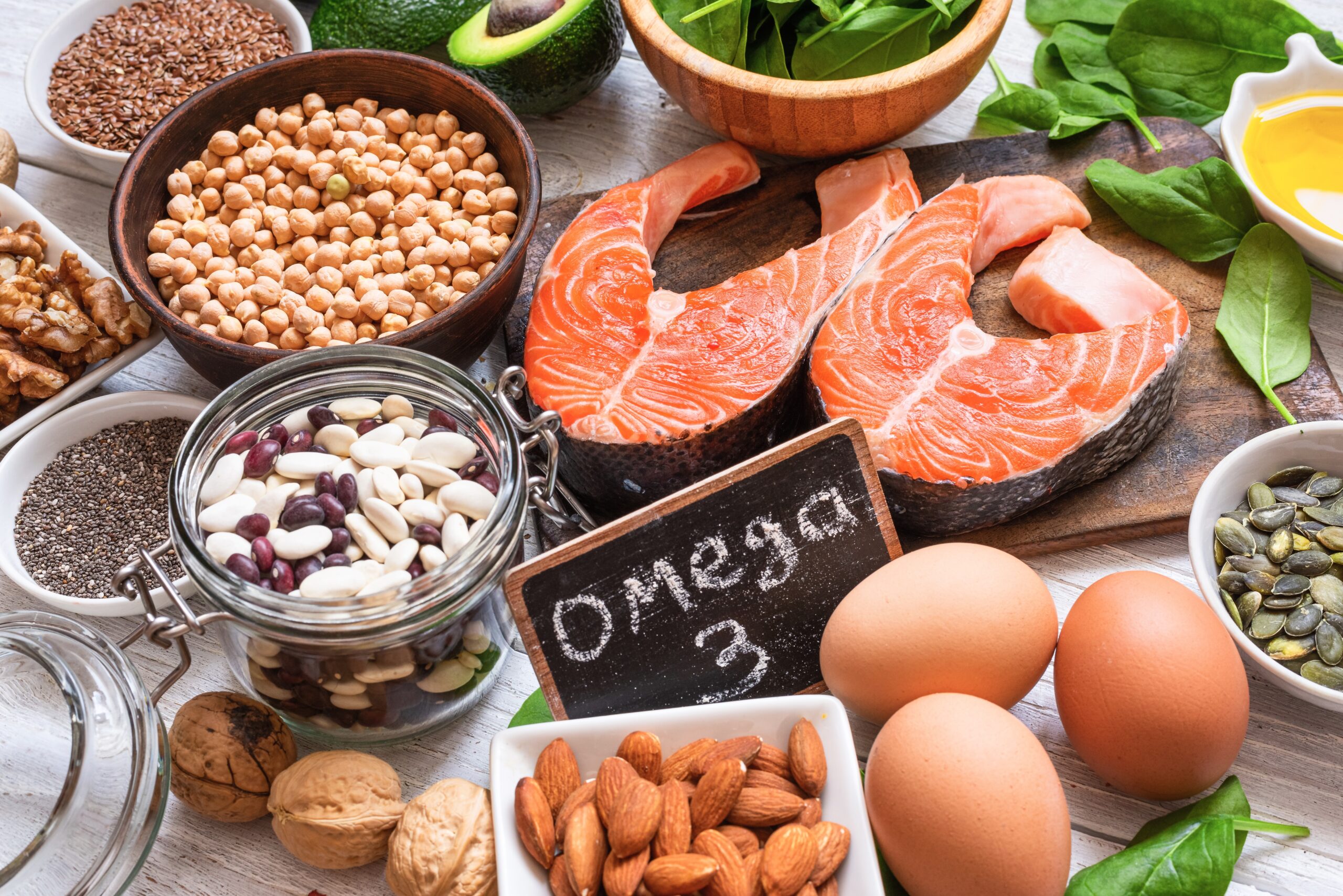
Omega-6 fatty acids
Omega-6 fatty acids are a type of polyunsaturated fat that your body needs for normal growth and development. They support brain function, skin and hair growth, bone health, and metabolic regulation. However, they must be balanced with another type of healthy fat called Omega-3.
Where are Omega-6s found?
Omega-6 fatty acids are common in many everyday foods, especially:
- Vegetable oils (like sunflower, corn and safflower oil)
- Processed and fried foods (because these oils are often used in cooking and manufacturing)
- Some nuts and seeds (such as almonds, sunflower seeds, and peanuts)
- Margarine and some salad dressings

Why should we reduce Omega-6 and balance it with Omega-3?
While Omega-6 fats are essential, most people eat too much of them compared to Omega-3s. This is because processed foods and vegetable oils are so common in modern diets.
Consuming too much Omega-6 and not enough Omega-3 can increase inflammation in the body, which is associated with a higher risk of chronic conditions such as heart disease, arthritis, and other inflammatory disorders [10].

How to balance Omega-6 and Omega-3:
- Cut back on processed and fried foods, and use less vegetable oil.
- Choose healthier oils, such as olive or avocado oil, but use them in moderation.
- Eat more foods rich in Omega-3, such as oily fish (salmon, mackerel, sardines), flaxseeds, chia seeds, and walnuts.
- When snacking, choose more Omega-3-rich options (like walnuts and flaxseeds) and eat Omega-6-rich nuts and seeds in moderation.

Monounsaturated fats
MUFA stands for monounsaturated fatty acids. These are a type of healthy fat found in many foods and oils. Unlike saturated fats (which are solid at room temperature), MUFAs are usually liquid when kept at room temperature.
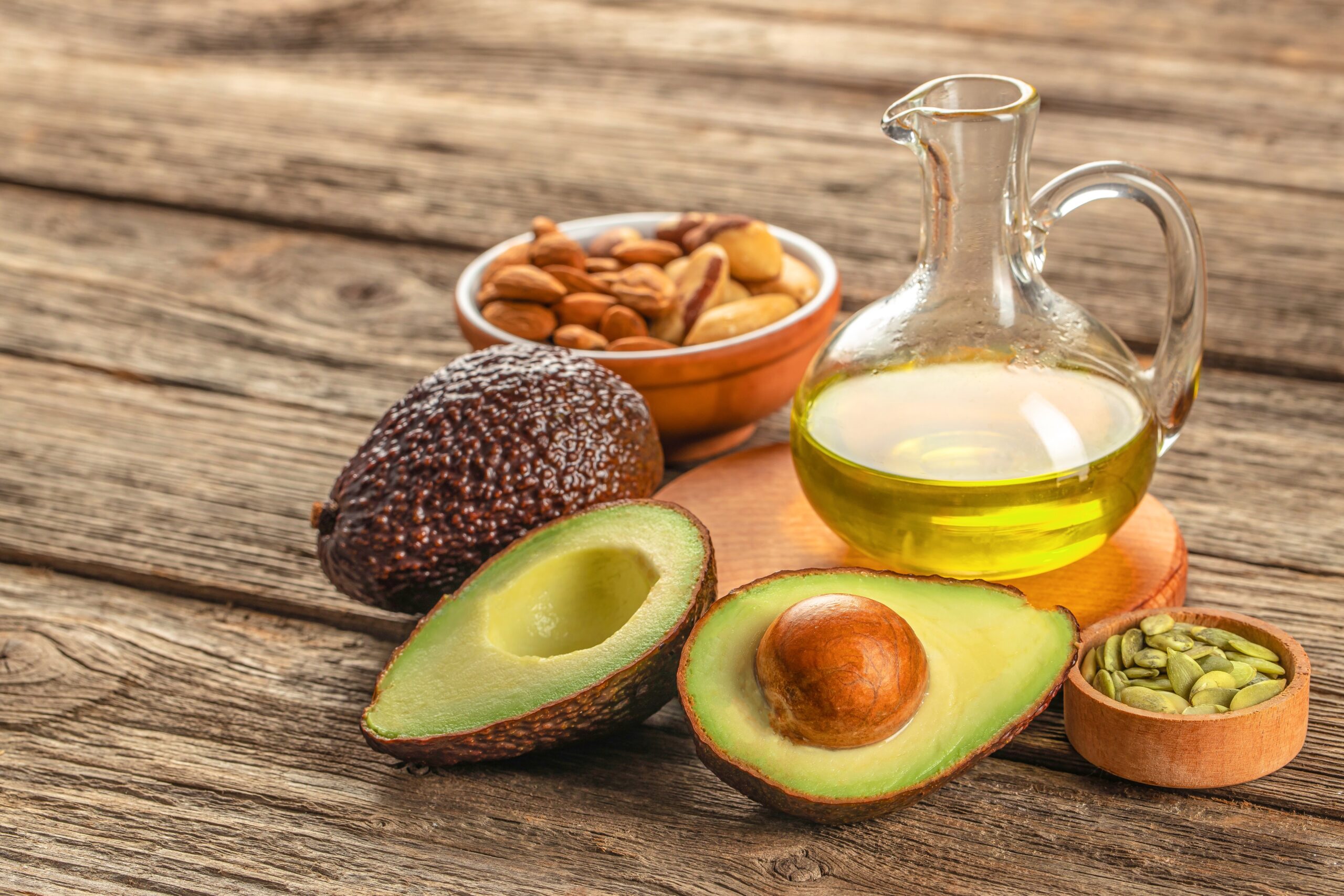
Where are MUFAs found?
You’ll find MUFAs in:
- Olive oil and olives
- Avocados
- Nuts (such as almonds, cashews, and peanuts)
- Seeds (like pumpkin and sesame seeds)
- Canola oil and peanut oil

Health Benefits of MUFAs
Including more MUFAs in your diet can bring several health benefits:
- Heart health: MUFAs can help increase HDL (good cholesterol) [11] and lower “bad” LDL cholesterol levels, which reduces your risk of heart disease and stroke.
- Anti-inflammatory effects: MUFAs can help reduce inflammation in the body, which is linked to many chronic diseases [12].
- Blood sugar control: They may help improve insulin sensitivity and support better blood sugar control, which is especially helpful for people with or at risk of type 2 diabetes [13].
- Nutrient absorption: Eating foods with MUFAs helps your body absorb fat-soluble vitamins like A, D, E, and K.

How to add MUFAs to your diet:
- Use olive oil for salad dressings or cooking.
- Snack on a handful of nuts or add them to your meals.
- Add avocado slices to salads, sandwiches, or toast.
- Choose nut butters (like almond or peanut butter) in moderation.

MUFAs in summary:
MUFAs are a healthy type of fat that supports heart health, helps control blood sugar, and fights inflammation. Swapping out saturated fats (such as butter or fatty meats) for monounsaturated fat (MUFA)- rich foods is a simple way to improve your diet’s health.
Examples of these include nuts, seeds, and avocados. Please note it is essential not to overdo it when consuming fats, as they can be quite calorie-dense.

Saturated Fats
Saturated fats have been given a bad rep, ever since Ancel Keys published his Seven Countries study…but is it justified? Well, before we answer this question, let’s discuss what a saturated fat is.

What are saturated fats?
Saturated fats are a type of fat found mostly in animal products and some plant oils. They’re called “saturated” because their chemical structure is fully “saturated” with hydrogen atoms, making them solid at room temperature.

Where are saturated fats found?
- Fatty cuts of meat (beef, lamb, pork)
- Poultry skin
- Butter, cheese, cream, and other full-fat dairy products
- Lard and suet
- Coconut oil and palm oil
- Some processed foods like pastries, cakes, and biscuits

Are saturated fats really dangerous?
For many years, saturated fats have been linked to higher cholesterol levels and an increased risk of heart disease. That’s why health guidelines have traditionally recommended limiting them.
However, recent research suggests the story is more nuanced.

Rethinking saturated fats: The Diet-Heart Hypothesis
For decades, most people have heard that eating saturated fat—like the kind found in butter, cheese, and fatty meats—raises cholesterol and increases the risk of heart disease. This idea, called the “diet-heart hypothesis,” started in the 1950s and has shaped nutrition guidelines ever since.
However, new research over the last 10–15 years is challenging this old belief. Many recent studies and large scientific reviews have found that eating saturated fats does not actually increase the risk of heart attacks, strokes, or early death. In fact, more than 20 major review papers by independent scientists have concluded that there’s no clear link between saturated fat and heart disease [14].
Despite this, official guidelines in the UK, the US, and other countries have been slow to change.
Part of the reason is that some experts and organisations involved in setting these guidelines have connections to industries that benefit from promoting plant-based oils and polyunsaturated fats instead of saturated fats.
There have also been problems with how the science was reviewed, and some experts have even admitted there isn’t enough evidence to set strict limits on saturated fat.

Not all fats are the same
The link between eating dairy products and heart health isn’t totally clear, and experts still debate whether dairy is good or bad for your heart. A recent study looked at large groups of people in China and the UK to see if there’s a connection between dairy foods and heart disease or stroke.
In China, people who regularly drank whole milk had a slightly higher risk of heart disease (about 9% more compared to those who didn’t drink milk), but they had a slightly lower risk of stroke (about 6% less).
In the UK, people who ate more dairy overall—especially cheese and low-fat milk—actually had a lower risk of heart disease and stroke.
When researchers combined results from multiple studies, they found that consuming dairy products in general was associated with a small reduction in the risk of heart disease (approximately 4% lower) and stroke (approximately 6% lower). Cheese and low-fat dairy seemed to be especially helpful [15].
In summary, the latest evidence suggests that eating dairy—especially cheese and low-fat dairy products—may help protect against heart disease and stroke.

Saturated fats summary
In summary, while it’s still wise to enjoy saturated fat in moderation and focus on a balanced diet, the notion that it’s especially dangerous may be outdated.
The latest evidence suggests that saturated fats are not as harmful as once thought, and strict caps may not be necessary for most people. As always, choosing whole, minimally processed foods and a variety of healthy fats is the best approach for long-term health.
- Not all saturated fats have the same effects on the body.
- The overall quality of your diet matters more than any single nutrient.
- Some newer studies show that moderate saturated fat intake, as part of a balanced diet rich in fruits, vegetables, whole grains, and healthy fats (like olive oil, nuts, and fish), may not be as harmful as once thought.
- The biggest health risks often come from diets high in processed foods, trans fats, and added sugars, not just saturated fats alone.

What’s the best approach?
- Moderation is key: It’s still wise to limit saturated fat, especially from processed foods and fatty meats.
- Focus on healthy swaps: Replace some saturated fats with unsaturated fats (like olive oil, avocado, nuts, and oily fish) for heart health
- Whole foods first: Enjoy natural sources of saturated fat (like dairy and meat) in moderation, as part of a balanced, varied diet.

Trans fats, the evil fats
So, we have the good (omega-3 fatty acids and monounsaturated fats), the bad (saturated fats, but now thought to be not so bad), and the ugly (trans fats).
If there is one type of fat you should definitely be avoiding, it’s trans fats. Let’s explore this in more detail.

What are trans fats?
Trans fats are a type of unhealthy fat that’s created when liquid vegetable oils are turned into solid fats through a process called “hydrogenation.” This process was once commonly used to improve the texture, shelf life, and flavour of processed foods. There are also small amounts of natural trans fats in some animal products, but the main concern is with artificial (industrial) trans fats.

Where are trans fats found?
- Processed foods like cakes, biscuits, pastries, and pies
- Fried foods (especially from fast food outlets)
- Margarine and some spreads
- Packaged snacks like crisps and crackers
- Some microwave popcorn

Why are trans fats dangerous?
Trans fats are an unhealthy type of fat mostly found in processed and fried foods. They’re linked to a higher risk of heart disease, stroke, and other serious health problems. The best approach is to avoid foods with trans fats whenever possible and focus on eating whole, unprocessed foods for better health.
Trans fats (TFAs) have been used in food manufacturing for a long time because they remain solid at room temperature, making them useful for products such as baked goods and spreads.
However, growing scientific evidence shows that eating too many trans fats can seriously increase your risk of heart disease, cancer, and diabetes. In fact, just a small increase in trans fat in your diet—about 2% more of your daily calories—can raise your risk of heart problems by 23%.
Trans fats raise your “bad” cholesterol (LDL), which is harmful for your heart. Studies have also shown that eating a lot of trans fats is linked to higher rates of cancer and diabetes.
While it’s impossible to avoid trans fats completely—since small amounts are naturally found in dairy and meat—even foods labelled as having “0.5g trans fat” can add up throughout the day and go over the recommended limit of 2g per day set by the American Heart Association [16].

Summary on trans fats
Trans fats are an unhealthy type of fat mostly found in processed and fried foods. They’re linked to a higher risk of heart disease, stroke, and other serious health problems. The best approach is to avoid foods with trans fats whenever possible and focus on eating whole, unprocessed foods for better health.

Sugar
Sugar is toxic and addictive, ask anyone with a sweet tooth. It has a dark history (the slave trade), and its future is contributing to the type II diabetes and non-alcoholic fatty liver disease pandemic.
We have nothing good to say about sugar, so try to avoid or at least reduce your consumption.

What should I eat when taking Mounjaro?
So, we have discussed what is good, bad and the ugly (now you know my favourite film) of food, but exactly what should you be eating?
It’s all about getting a balanced meal. This means getting more of the good stuff (hint: protein) and less of the bad stuff (TRANS FATS and SUGAR!). Let’s give you some pointers.

Making a balanced meal
- A quarter of your meal should consist of low-fat protein; examples of this include salmon, chicken breast, eggs, etc.
- A quarter of your meal should contain complex carbs; examples of this include sweet potatoes, brown rice, whole wheat pasta, etc.
- Half your meal should consist of non-starch vegetables; examples of these include mushrooms, peppers, tomatoes, asparagus, etc.
- Finally, add a small amount of healthy fats. You can do this by having dips of hummus or avocado or dressing your meal in olive oil. You can also add low-fat cheeses, such as feta, or include nuts and seeds like walnuts or sunflower seeds.

What should I drink on Mounjaro?
It is always good practice to drink more water. It is calorie-free and helps keep you full between meals, and can even reduce the risk of side effects such as constipation [5].
If drinking water starts to get boring for you, try adding squash or a slice of lemon to your water to keep yourself from getting bored.
Herbal teas, such as ginger or peppermint, can help alleviate side effects like the nausea associated with Mounjaro [17]. These herbal teas are not only healthy for you but can also be used as a replacement for tea and coffee when you crave a warm drink.

What foods should I avoid on Mounjaro?
Now, we are not telling you that you can’t eat the following foods ever, but it is best practice to limit certain foods on your weight loss journey.
Try to limit the amount of heavily processed foods you have, as well as foods that are high in calories and are nutritionally lacking. Also, if you are suffering from any gastrointestinal side effects, try to limit these foods as they may make them worse.
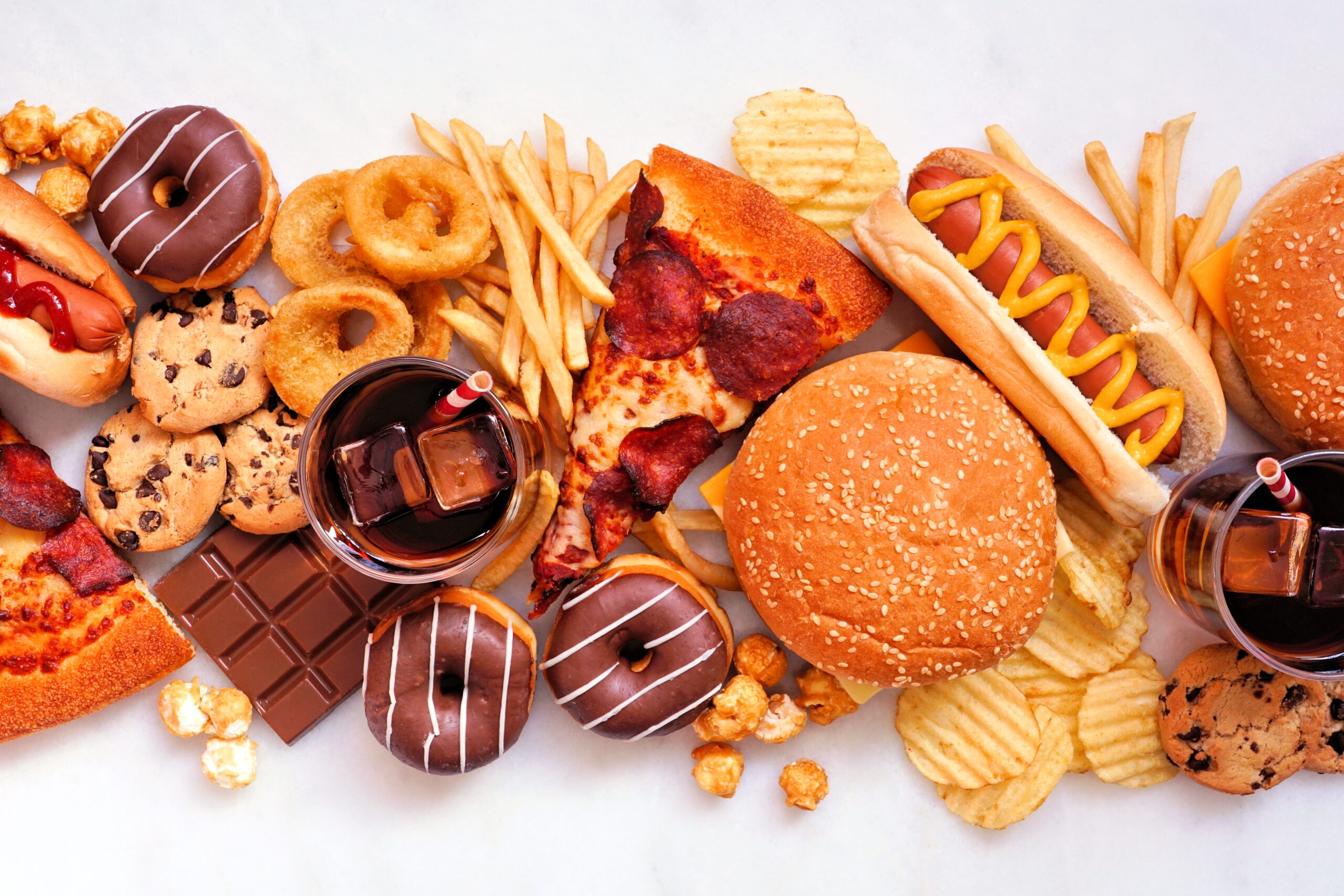
Processed foods
Many foods these days have been heavily processed, often with added preservatives, flavourings, fat, or even salt and sugar.
These foods become calorie-dense due to the processing and provide very little nutritional value. And the regular consumption of these processed foods can lead to health complications such as obesity, heart disease and even type 2 diabetes[18].

Examples of processed foods
- Meats such as sausages, jerky, burgers and bacon
- Baked food such as cakes and biscuits
- Chocolates
- Crisps
- Sweets

Refined carbohydrates
Refined carbohydrates have undergone a processing process which strips them of their nutrients, such as fibre, vitamins, and minerals. And a lot of times, these minerals are replaced with sugars. As a result, weight loss becomes more difficult, and your blood sugar levels rise.
Examples of refined carbohydrates
- White bread
- White rice
- White pasta
- White flour
- Most cereals

What should I avoid drinking?
The only drink we would ever recommend is water; you can never drink enough of it (unless you drink 10 litres).
Most soft drinks are calorie-dense, and you can end up drinking a lot of calories without thinking. Also, they contain a lot of sugar, and it can be argued that they have been responsible for a huge increase in non-alcoholic fatty liver disease, but it is best to avoid them. A recent study found that the consumption of soft drinks leads to an increased risk of NAFLD [19].
Try to limit or even avoid the following:
- fizzy drinks,
- alcohol,
- caffeinated drinks and
- concentrated fruit juices.
The fizz in fizzy drinks contains carbon dioxide, which can exacerbate side effects of Mounjaro, such as bloating and indigestion [5]. On top of that, a lot of them contain sugar, which can be attributed to weight gain and can increase the risk of type 2 diabetes [20].
Caffeine
Although caffeine is not necessarily bad for you (this blog was written with the aid of many cups of coffee), it can lead to interrupted sleep, which is essential for the weight loss process.
If you are not well-rested, you may struggle to have the energy to exercise or cook, which can lead to missing the gym and staying home, ordering takeaways.
Excessive caffeine consumption can also lead to diarrhoea and nausea.

Mounjaro and alcohol
We suggest limiting your alcohol consumption and even stopping it entirely, not just for weight loss but for your health in general.
Although there is no known interaction between the active ingredient in Mounjaro and alcohol, it is best not to mix the two for the following reasons:
- Many alcoholic drinks contain a lot of calories, which is counterproductive to your weight loss goals.
- Alcohol can spike your blood sugar, leading to more food cravings, which counters the effects of Mounjaro.
- It can also disrupt your sleep; this is not just due to the nature of the drink, but also to the timing at which most people consume it. Your sleep is very important, not just for losing weight, but for your overall health and energy.
- Lastly, gastrointestinal side effects such as diarrhoea, nausea and acid reflux can worsen with alcohol. So, if you are drinking while taking Mounjaro and you notice these side effects, limit your consumption immediately.
For a more in-depth analysis, read our blog ‘Can you drink alcohol while taking Mounjaro?’.

Recommended diet plan
There is no specific diet plan that we suggest for losing weight. We suggest not being too rigid with your diet as it makes it harder to stick to.
We’re simply offering guidelines and suggestions. Make sure to eat nutritionally dense foods, opt for those lower in calories so you can eat more without gaining weight, and ensure you’re in a calorie deficit.
If you follow those tips, weight loss will be inevitable. Also, this may be obvious, but eat foods you like. Please don’t force yourself to eat foods you dislike because you think it’s healthy. This does more harm than good, as you won’t want to stick to the plan.
Here are some meal suggestions if you need ideas:

Breakfast
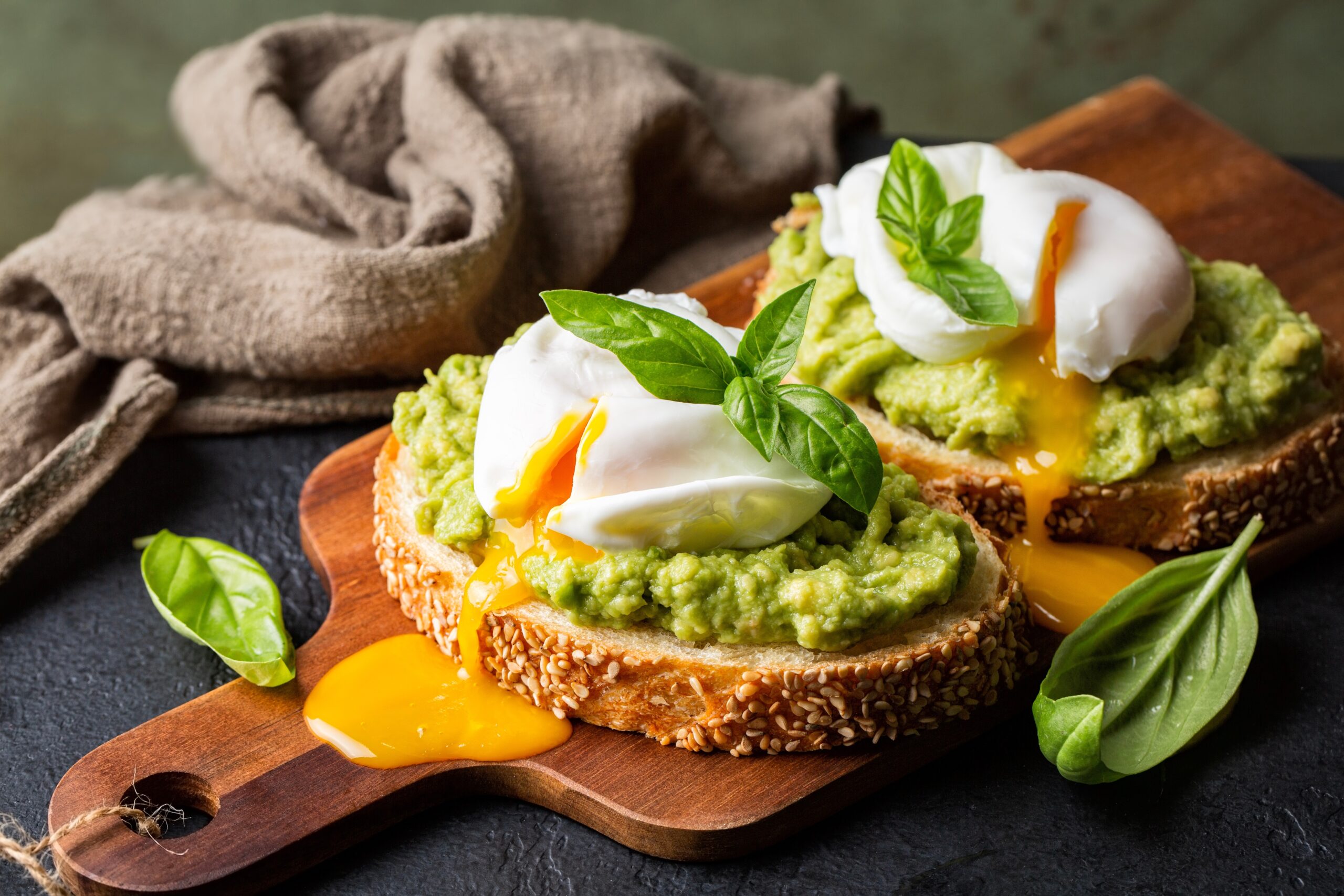
Oats
You can prepare overnight oats the night before or make them in the morning. It’s totally up to you. One of the best things about oats is that you can customise them to suit your preferences.
I enjoy making oats in the morning. I mix in a spoonful of peanut butter, chop up a banana, and add it to the mix. I also add berries. This is just how I like to prepare mine, but oats are such a versatile food. There’s no right or wrong way to eat them.
Eggs
Eggs are such a staple breakfast food, and for a good reason, too; not only are they delicious, but they are also quick to prepare.
Personally, I like to boil eggs, then cut them up, mix them with avocado, and add a bit of pepper for extra flavour. But, like oats, the options are endless.
Yoghurt
Greek yoghurt is a great option if you don’t have much time in the morning. Simply pour some Greek yoghurt over berries and sprinkle chia seeds on top for a delicious and nutritious breakfast.
Lunch and dinner
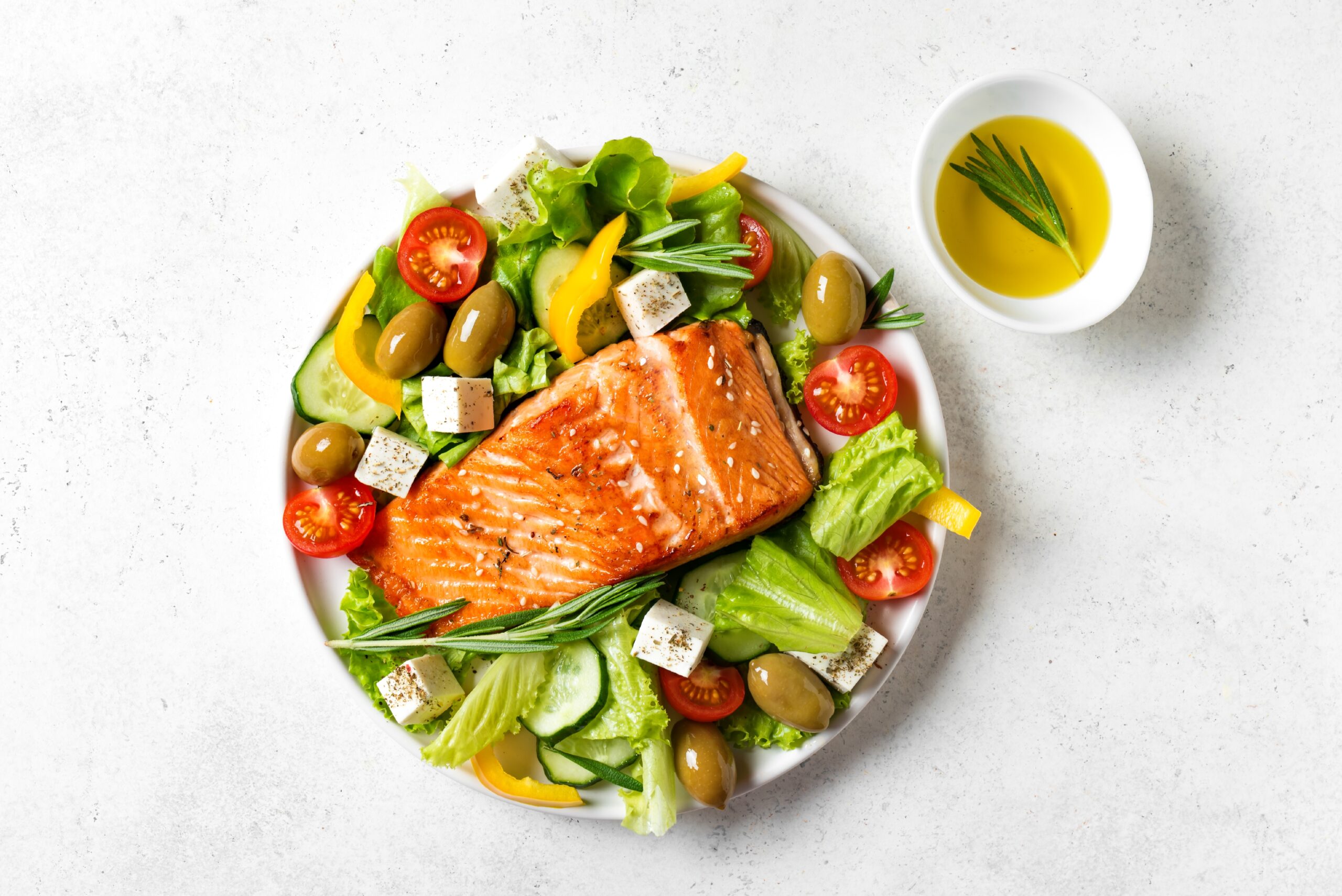
Fish
Prepare a fillet of salmon or tuna; this can be done quickly with an air fryer if you’re not a skilled cook. For a side, have either potatoes or rice; you can alternate between these to avoid boredom. Don’t forget to fill your plate. This will ensure you get the vitamins you need and keep you feeling full.
Chicken Breast
Chicken breast is a staple of most diets, as it is a lean protein source that can be prepared in many ways. Marinate it in any way you like, and serve it with a side of rice or potatoes to meet your carbohydrate needs. Don’t forget to add your veggies.
Jacket Potato
A jacket potato is a staple of school dinners; relive your childhood with this easy-to-prepare a meal. You can add whatever you want to a jacket potato. Just make sure you add adequate protein and veg.

Snacks
It is essential to choose your snacks wisely, especially when trying to stay in a calorie deficit. When you’re feeling peckish, try to snack on fruit; not only are they low in calories, but they are also rich in vitamins and full of water.

Lifestyle advice to aid your weight loss journey
Here are some minor lifestyle changes you can make to encourage faster and more consistent fat loss. Try incorporating these into your daily routine for optimal results.
Drink more water
This is my number 1 weight loss tip. Approximately 60% of our body is composed of water, making drinking water essential for our health [21]. Not only that, but water contains zero calories, so it is better to drink it than sugary alternatives. Also, it keeps you full between meals.

Get more active
This is my number 1 weight loss tip. Approximately 60% of our body is composed of water, making drinking water essential for our health [21]. Not only that, but water contains zero calories, so it is better to drink it than sugary alternatives. Also, it keeps you full between meals.
Although exercising is an essential part of losing weight, moving around more than you usually would also makes a huge difference.
Small changes, such as taking the stairs instead of the elevator or using a standing desk, can make a significant difference.
You can also go for walks with a friend to keep you active and make your fitness journey easier. It is recommended to walk 10000 steps a day to have a healthy lifestyle.

Track your progress
Try to weigh yourself every week to track your progress. We don’t recommend weighing yourself daily, as the slight weight loss you see can be misleading and demotivating.
As you start seeing results, it can be very motivating and will help you stay committed to your journey.
Ensure you weigh yourself first thing in the morning before eating or drinking anything, as this will provide a more accurate reading. Additionally, you can measure your waist or assess how well your clothes fit.
To make dieting easier, you can download an app to track how much you’re eating, your calorie intake, and your macronutrients; these come in handy and make your life so much easier. And if you are not making progress, you will know how much you are eating and can adjust accordingly.

Change how you cook your food.
Try to avoid frying your food; instead, opt for a grill or an air fryer. This is healthier as you are using less oil, which can add unwanted calories and fats to your diet. Try replacing salt with herbs and spices. This can keep meals just as tasty while lowering the risk of developing high blood pressure [22].

Get help
Having a good support system can significantly aid the weight loss process. Friends, family members or a support group can provide great motivation and support to you. Even if they are not trying to lose weight, they can provide emotional support and cheer you on days you feel like you’re struggling.
Inform your social circle of what you are doing so you can adjust your social life to align with your goals. You can make small changes, such as cooking together instead of ordering takeout or going for a walk instead of staying indoors.
-
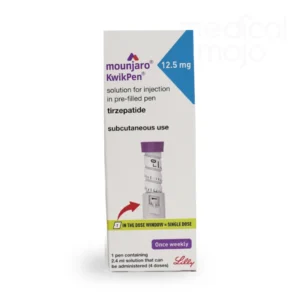 Mounjaro 12.5mg InjectionPrice range: £422.50 through £1,640.00
Mounjaro 12.5mg InjectionPrice range: £422.50 through £1,640.00 -
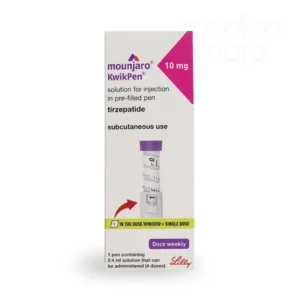 Mounjaro 10mg InjectionPrice range: £323.75 through £1,265.00
Mounjaro 10mg InjectionPrice range: £323.75 through £1,265.00 -
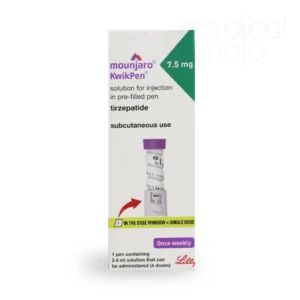 Mounjaro 7.5mg InjectionPrice range: £323.75 through £1,265.00
Mounjaro 7.5mg InjectionPrice range: £323.75 through £1,265.00
FAQS
What happens if I don’t eat?
Starving yourself is counterproductive to your weight loss journey. You are more at risk of gastrointestinal side effects, and on top of this, you become more at risk of having nutritional deficiencies in your body, which can lead to health complications.
If you are experiencing side effects that affect your ability to eat, such as nausea, it is okay to eat a bit less, but make sure you are well-hydrated. Then, when you feel like you can eat again, carry on as usual.

What happens if I overeat?
Even while taking Mounjaro, overeating will prevent you from losing weight or may even make you gain weight. Mounjaro does not cause weight loss. It just suppresses your appetite; you still need to make lifestyle and diet changes for optimal results.

Are there foods I should avoid while on Mounjaro?
It’s best to avoid high-sugar, high-fat, and highly processed foods, as these can slow your progress and may worsen side effects like nausea. Focus on whole, nutrient-dense foods instead.

Can I still drink coffee?
You can still include caffeine in your diet, but it’s best to limit the amount you consume. Excessive caffeine consumption can lead to gastrointestinal side effects and can affect your sleep. Try to avoid caffeine after 2 pm to prevent it from affecting your sleep. Also, be mindful of how you drink your coffee; opt for black coffee and try to avoid adding too much sugar if possible.

Can I still eat sugar?
Try not to. If you can’t cut it out, try reducing the amount you consume. Sorry, I have nothing good to say about sugar.

What fats can I eat?
Omega-3 fatty acids and monounsaturated fats are your go-to fats. They are beneficial to your overall health and especially your heart. Try to have more omega-3s than omega-6s, which can be inflammatory, and avoid all trans fats. Saturated fats are no longer the bogeyman they once were, but dairy fats are better. However, don’t go overboard and eat everything in moderation.

How do I order Mounjaro from Courier Pharmacy?
- Complete the online questionnaire
- Upload a recent photo
- Show proof of dose titration (for higher doses)
- Enter your GP details
- Complete a follow-up video consultation

Why choose Courier Pharmacy for Mounjaro?
- Competitive prices
- Free sharps bin
- Free needles
- Free alcohol wipes
- Free consultations
- Support for side effects
At Courier Pharmacy, we’re dedicated to making your experience safe, affordable, and supportive. If you have any questions or need help, our friendly team is always here for you.
This information is for general guidance only. For personalised medical advice, please consult your doctor or healthcare provider.
References
- ClinicalTrials.gov. (2024) A study of tirzepatide (LY3298176) in participants with obesity or overweight (SURMOUNT-1). Available at: https://clinicaltrials.gov/study/NCT04184622?term=NCT04184622&rank=1&tab=results#results-overview (Accessed: 22 June 2025).
- Medical Mojo. (2024) Mounjaro weight loss week by week. Available at: https://medicalmojo.co.uk/mounjaro-weight-loss-week-by-week/ (Accessed: 22 June 2025).
- Wu, X., Zhang, C., Liang, Z., Liang, Y., Li, Y. and Qiu, J., 2024. Exercise combined with a low-calorie diet improves body composition, attenuates muscle mass loss, and regulates appetite in adult women with high body fat percentage but normal BMI. Sports, 12(4), p.91.
- Redman, L.M., Heilbronn, L.K., Martin, C.K., De Jonge, L., Williamson, D.A., Delany, J.P., Ravussin, E. and Pennington CALERIE Team, 2009. Metabolic and behavioral compensations in response to caloric restriction: implications for the maintenance of weight loss. PloS one, 4(2), p.e4377.
- Ahsan, S. (2025). Mounjaro side effects. [online] Courier Pharmacy. Available at: https://courierpharmacy.co.uk/mounjaro-side-effects-2/ [Accessed 4 Jun. 2025].
- Nagasako-Akazome, Y., Kanda, T., Ohtake, Y., Shimasaki, H. and Kobayashi, T., 2007. Apple polyphenols influence cholesterol metabolism in healthy subjects with relatively high body mass index. Journal of oleo science, 56(8), pp.417-428.
- Lee, J.W., Morris, J.K. and Wald, N.J., 2016. Grapefruit juice and statins. The American Journal of Medicine, 129(1), pp.26-29.
- Lunn, J. and Buttriss, J.L., 2007. Carbohydrates and dietary fibre. Nutrition Bulletin, 32(1), pp.21-64.
- DiNicolantonio, J.J. and O’Keefe, J., 2021. The importance of maintaining a low omega-6/omega-3 ratio for reducing the risk of autoimmune diseases, asthma, and allergies. Missouri medicine, 118(5), p.453.
- Djuricic, I. and Calder, P.C., 2021. Beneficial outcomes of omega-6 and omega-3 polyunsaturated fatty acids on human health: An update for 2021. Nutrients, 13(7), p.2421.
- Yanai, H. and Tada, N., 2018. Effects of consumption of various fatty acids on serum HDL-cholesterol levels. Journal of Endocrinology and Metabolism, 8(5), pp.94-99.
- Ravaut, G., Légiot, A., Bergeron, K.F. and Mounier, C., 2020. Monounsaturated fatty acids in obesity-related inflammation. International journal of molecular sciences, 22(1), p.330.
- Schwingshackl, L. and Strasser, B., 2012. High-MUFA diets reduce fasting glucose in patients with type 2 diabetes. Annals of Nutrition & Metabolism, 60(1), p.33.
- Teicholz N. A short history of saturated fat: the making and unmaking of a scientific consensus. Curr Opin Endocrinol Diabetes Obes. 2023 Feb 1;30(1):65-71.
- Zhuang, P., Liu, X., Li, Y., Ao, Y., Wu, Y., Ye, H., Wan, X., Zhang, L., Meng, D., Tian, Y. and Yu, X., 2025. A global analysis of dairy consumption and incident cardiovascular disease. Nature Communications, 16(1), p.437.
- Islam, M.A., Amin, M.N., Siddiqui, S.A., Hossain, M.P., Sultana, F. and Kabir, M.R., 2019. Trans fatty acids and lipid profile: A serious risk factor to cardiovascular disease, cancer and diabetes. Diabetes & Metabolic Syndrome: Clinical Research & Reviews, 13(2), pp.1643-1647.
- Yaser Mohammed Al-Worafi (2025). Evidence-Based Complementary, Alternative, and Integrated Medicine and Efficacy and Safety. CRC Press eBooks, pp.329–347. doi:https://doi.org/10.1201/9781003328117-25.
- UCL (2024). Replacing ultra-processed foods in diet may reduce type 2 diabetes risk. [online] UCL News. Available at: https://www.ucl.ac.uk/news/2024/sep/replacing-ultra-processed-foods-diet-may-reduce-type-2-diabetes-risk.
- Denova-Gutiérrez, E., Rivera-Paredez, B., Quezada-Sánchez, A.D., Armenta-Guirado, B.I., Muñoz-Aguirre, P., Flores, Y.N., Velázquez-Cruz, R. and Salmerón, J., 2025. Soft drink consumption and increased risk of nonalcoholic fatty liver disease: Results from the health workers cohort study. Annals of Hepatology, 30(1), p.101566.
- Pacheco, L.S., Tobias, D.K., Haslam, D.E., Drouin-Chartier, J.P., Li, Y., Bhupathiraju, S.N., Willett, W.C., Ludwig, D.S., Ebbeling, C.B., Hu, F.B. and Guasch-Ferré, M., 2025. Sugar-sweetened or artificially sweetened beverage consumption, physical activity and risk of type 2 diabetes in US adults. Diabetologia, pp.1-9.
- https://www.usgs.gov/special-topics/water-science-school/science/water-you-water-and-human-body
- https://www.nhs.uk/live-well/eat-well/food-types/salt-in-your-diet/.



